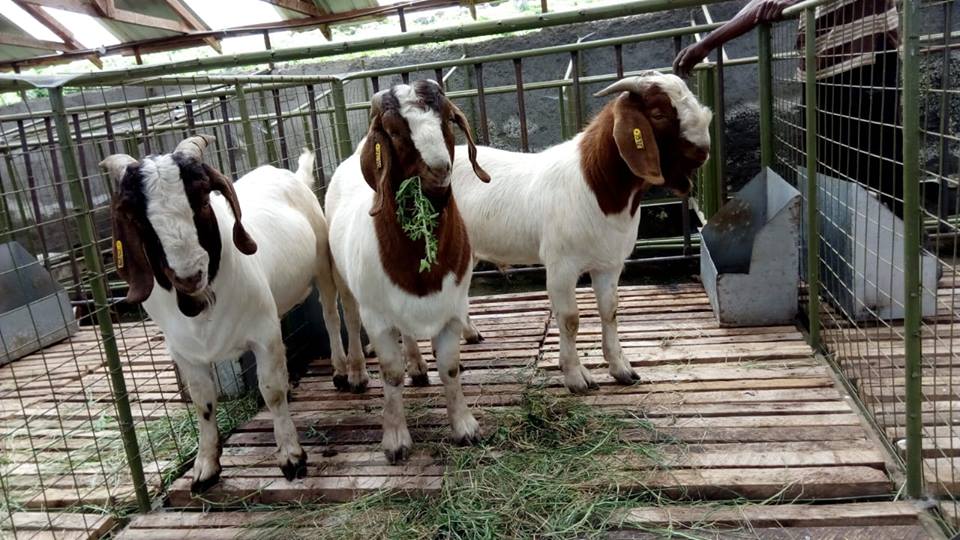 Boer goats breed. When they are properly fed and managed, they are able to attain 200g of weight per day translating to 30-35kg live weight in about five months. Photo, Malewa Boer Goats.
Boer goats breed. When they are properly fed and managed, they are able to attain 200g of weight per day translating to 30-35kg live weight in about five months. Photo, Malewa Boer Goats.
The Boer goat (simply Boer) is characterised by a white body with a red head and some red colour on at least some part of the neck.The red colour may look brown in some individual animals.
The goats have large drooping ears and some people tend to mistake them for sheep due to the shape of the muzzle.
They are stocky with short legs and compact blocky body that allows them to pack in a large quantity of meat.
The goats are very hardy and can adopt to all types of weather and climate. They normally feed on leaves of trees, corns, green grasses and some other supplementary feeds. Because they require less food they are easy to maintain.
Boers have faster growth rate as they have a high feed conversion enabling them to add more meat faster and attain market weight in shorter periods than other goats.
Boer goats are polyestrous as they breed continuously year round. Does (female doers) attain sexual maturity from 5 to 9 months. Though multiple births are common, usually first-time Does will have one kid. After that they will have an average of two kids and sometimes three kids.
According to Malewa Boer Goats farm at Ol Kalau in Nyanadarua County, pure bred Boer is docile, fast-growing and has high fertility. When properly fed and managed, it is able to attain 200g of weight per day translating to 30-35kg live weight in about five months.
A mature doe weighs between 86 and 104kg live weight while a buck (male Boer goat) posts 91 to 154kg translating to about 44 to 53kg and 46 to 79kg of meat respectively of their dressed carcasses.
RELATED STORY: Fact sheet on piglet management for improved production
Given there are few Boers in Kenya and hence their purchase prices are high. Currently, a mature two-year-old buck weighing about 100kg may fetch Sh60,000 while young stock of five to 12 months fetch between Sh30,000 and Sh50,000 depending on the sex.
The major markets include farmers who want to start Boer goat farming or farmers with indigenous breeds and wants to do crossbreeding to improve their qualities. The other buyers are those who want the goat for meat.
It is also suitable for the export meat market because of its fast growth and the reduced rearing time.
RELATED STORY: Fact sheet on heart water disease in cattle, sheep and goats
Crossbreeding
The characteristic head colour is always expressed when the Boer is crossbred with other goats. It is, therefore, easy for goat buyers to identify goat cross-breeds with Boer genes.
Such crosses normally fetch higher prices than other goats as they tend to grow faster and bigger than the local goats.
RELATED STORY: Rearing five dairy goats is 45 per cent more profitable than a dairy cow
Boer meat
The one big advantage of Boer goat meat is that it has low fat and low cholesterol which is ideal for the health conscious person.
The meat is also tender and with good nutritional balance.
Malewa Boer Goats farm offers knowledge, experience, genetic resources and producer interaction about the animals to all who want to start the venture.
















Comments powered by CComment